
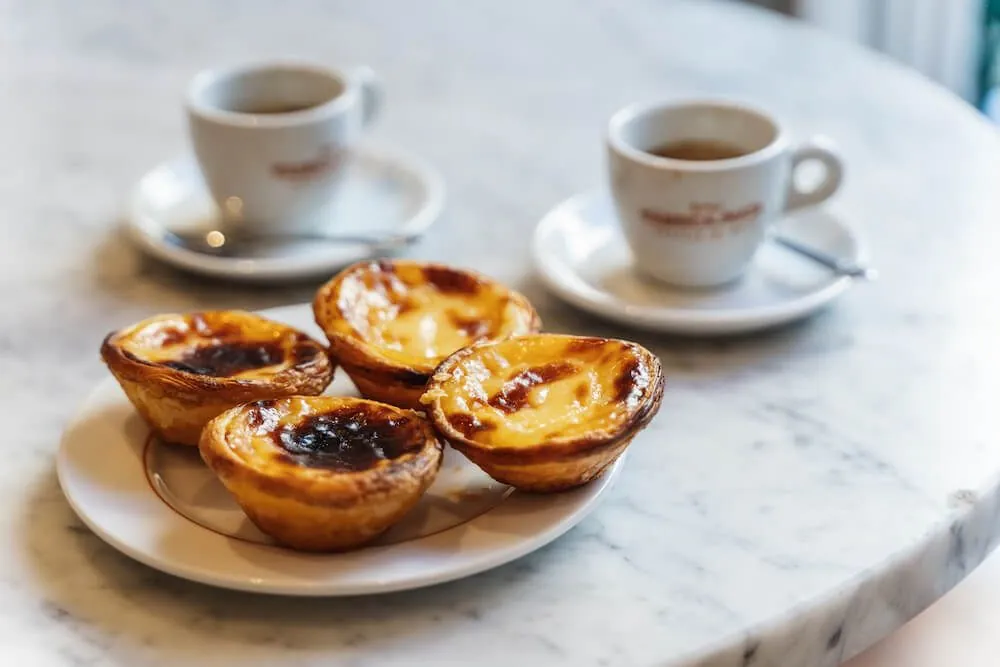

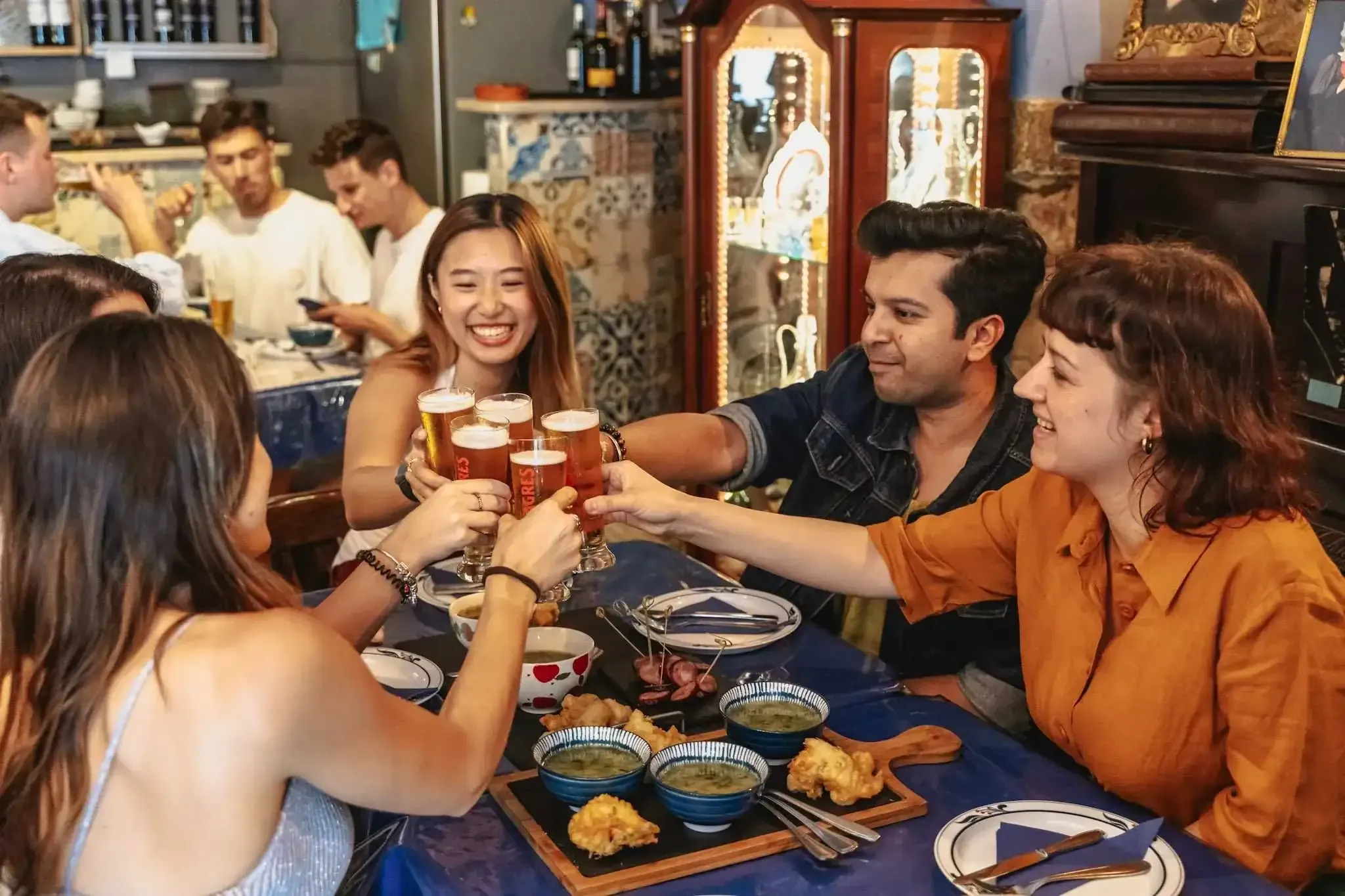
Pastel de Nata (plural Pastéis de Nata) might just be Portugal’s biggest export since Cristiano Ronaldo, satisfying sweet tooths all around the world. And yet until relatively recently, these sweet egg custard tart pastries were barely known beyond the country’s borders. What is Pastel de Nata? Where is the best place to try it? And what—apart from being drop-dead delicious—explains its soaring popularity?
The Pastel de Nata dates back to before the eighteenth century. However, until the mid-1830s, it was in the preserve of a small community of Catholic monks at Santa Maria de Belém’s Jerónimos Monastery, on the outskirts of Lisbon.
Back then, monasteries and convents used large quantities of egg whites to starch clothes and religious habits for friars and nuns. Instead of wasting leftover eggs, it was common for friars and nuns and sisters to use the leftover egg yolks to make cakes and pastries. Some of these monastery-made products would be consumed by members of the order; others would be sold to support the monastery, resulting in the proliferation of sweet pastry recipes throughout the country.
-1.webp)
Jerónimos Monastery in Lisbon’s district of Belém – the birthplace of the Pastel de Nata
The Liberal Revolution of 1820 brought about the dissolution of many of these religious orders, and in the face of the impending closure of many convents and monasteries, the monks of Jerónimos Monastery started selling pastéis de nata at a nearby sugar refinery to bring in revenue. In 1834, the monastery was closed and the recipe passed into the hands of an enterprising Brasilian businessman, Domingo Rafael Alves.
Alves purchased the recipe for these beloved pastries, and in 1837 the production of these pastéis resumed in Alves’ nearby sundries shop, Antigua Confeitaria. Today, Alves’ descendants shift about 20,000 of these sweet custard treats a day.
Today Jerónimos Monastery is a major tourist hotspot and a UNESCO World Heritage Site. But for those who prioritise pastries over pilgrimages, it’s the nearby Antigua Confeitaria that is the destination of choice.
Crisp, flaky layers of pastry with a delicious, creamy egg-custard filling and a dusting of cinnamon make the Pastel de Nata tastier than a prime Cristiano Ronaldo penalty.
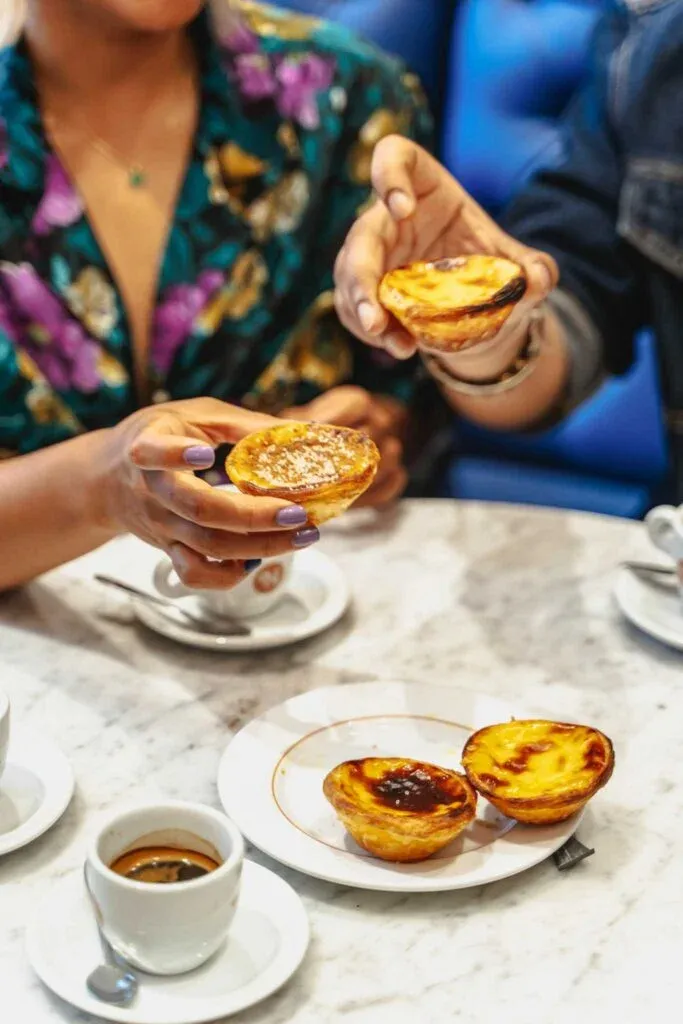
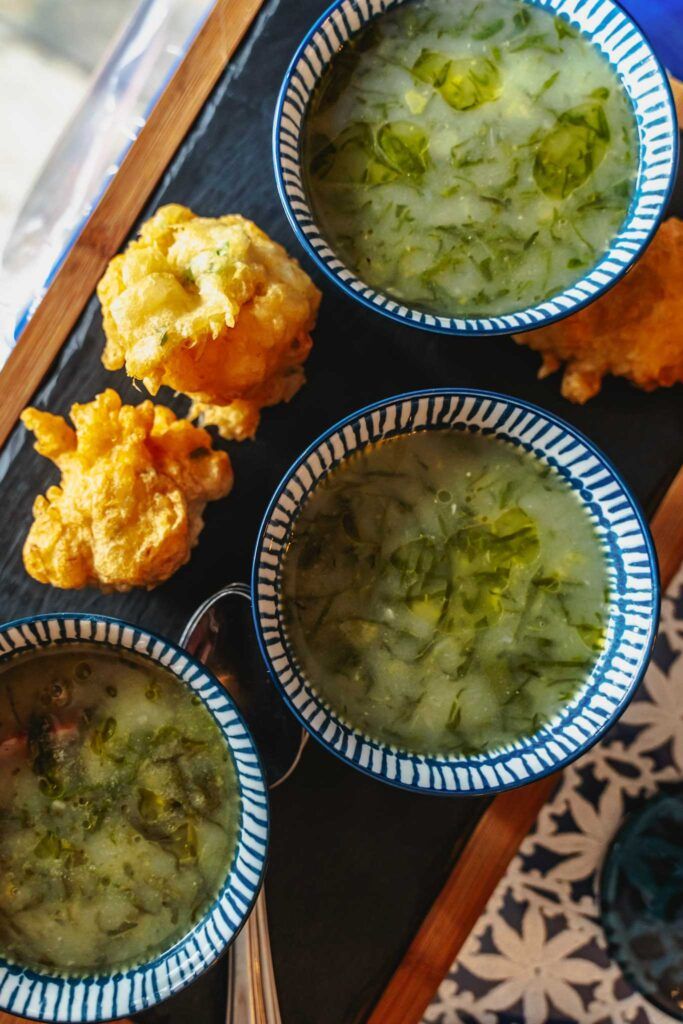
What is Pastel de Nata? Find out on our Lisbon Food Tour
Trying some tapas-style treats on our Lisbon Food Tour
If you’ve only recently heard about Pastel de Nata, that’s because this succulent Portuguese sweet is still relatively recent on the sweet-toothed food scene.
Way back when in 2009, The Guardian listed Pastéis de Nata as one of the “50 best things to eat in the world”. (Actually they listed Lisbon’s “custard tarts” as one of the best things to eat, but we can forgive them since they clearly meant well). More recently, in April 2019, Bloomberg published an article about how Pastel de Nata is on course to become as globally beloved as the croissant.
More and more bakeries around the world are trying to meet demand by producing their own Pastel de Nata. But by far the best place to try this sweet custard tart is in Lisbon, at the source.
Visiting the Portuguese capital? Immerse yourself in its culinary culture through our award-winning Lisbon Food Tour.
Recently voted one of the world’s top food experiences, this indulgent food tour introduces you to the best of Lisbon’s famous food scene. Treat your tastebuds to presunto, chourico, seafood and more, all perfectly paired with four local beverages. Savour the country’s favourite drink, Ginjinha, and indulge in the flavours of local wines including the iconic vinho verde or “green wine”.
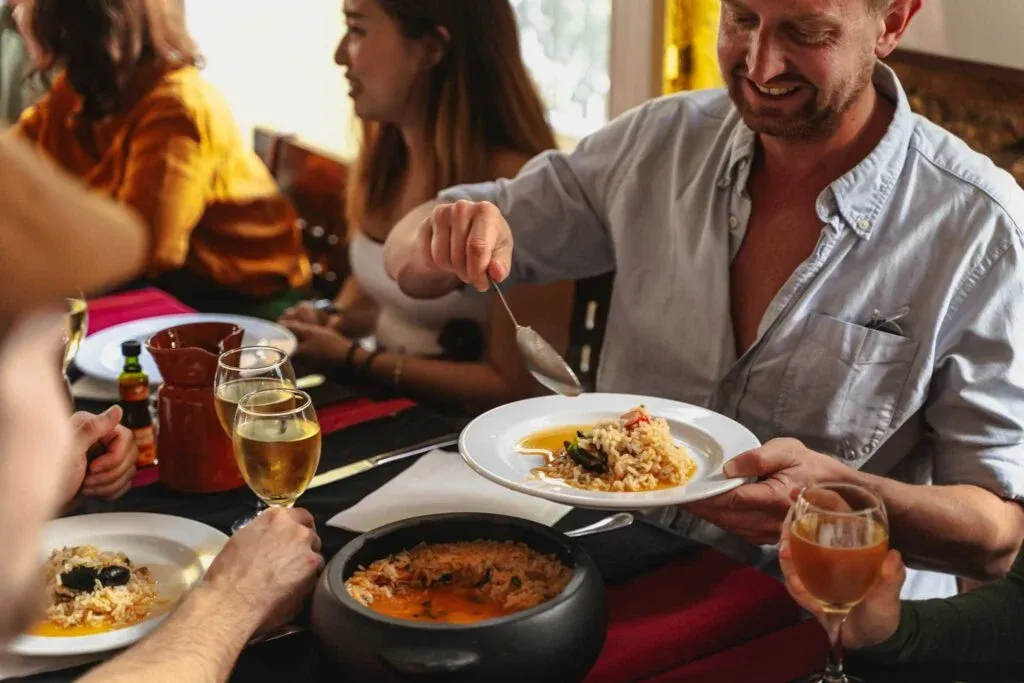
Customer enjoying some traditional seafood on a Lisbon Food Tour
And of course, no tasting is complete without the sweet treat star of the show: Pastel de Nata!

No headings found in content.

You might have heard of the “Seven Wonders of the World”, but did you know this phrase also applies to food? Try three of the seven wonders of Portuguese cuisine on our Lisbon Food Tour, an award-winning experience through the neoclassical Baixa neighbourhood. With everything pre-arranged, you’ll skip the crowds; no queues, no guesswork, just authentic Portuguese flavours, served stress-free.
A local guide will take you and a group of fellow foodies on a comprehensive gastronomic tour of the only flat neighbourhood in the city, featuring the best of "new Lisbon" after the devastating earthquake of 1755.
Our route starts from the river Tagus and takes us through magnificent squares like Praca do Comercio, making our way toward the heart of Baixa. This is where we'll discover the history of the Portuguese Empire and Inquisition, and see sought-after sites like Igreja do Santo Domingo and the Elevador de Santa Justa.
Along the way, we'll stop at local, family-owned eateries to try traditional petiscos and drinks. Tantalise your taste buds with Portuguese classics like codfish, chouriço, and seafood rice, before indulging in the city's street food featuring bifana, a sandwich stuffed with simmering meat, and a salgado, battered and fried. Then, wash it all down with perfectly paired drinks like green wine, local beer, and Ginjinha, a traditional cherry liqueur.
And of course, no Lisbon Food and Wine Tour would be complete without a sweet treat. To end your tour, you’ll satisfy your sweet tooth with a classic Portuguese dessert before continuing the night with your newfound friends.
What are you waiting for? Eat like a local and book our Lisbon Food Tour today.

The hills in Lisbon are no joke so it’s best to stay hydrated with the Lisbon Tipsy Tour. Forget about a mundane walking tour— this is where history meets a night out on the town. Meet fellow travellers from around the world while exploring Lisbon’s bustling nightlife with a local, expert guide.
We’ll kick off the tour at Largo do Carmo where we’ll introduce you to the darker side of Lisbon’s history. You’ll hear a dramatic and bloody love story between a Portuguese prince and a Spanish lady of the court. After such a riveting retelling you’ll deserve a drink–or four, so we’ll head into Bairro Alto to discover some local, trendy bars. Start the night with a refreshing drink before breaking the ice over more twisted and fascinating tales. You’ll hear scandalous stories you won’t hear on your standard walking tour, including facts about Lisbon’s naughty past that will make you gasp.
As the adventure continues, we’ll visit some of the most sought-after bars in the city including the only one that serves a one-of-a-kind shot you can only find there. If you’re still thirsty for more you can get more shots in exchange for giving up your bra—yes you’ve heard that right. A bra for shots? It’s a win-win! You’ll also try a long drink featuring bitter almond liquor and other classic Portuguese shots. Learn about the origin stories of locally loved drinks all the while discovering Lisbon’s hidden gems. Still thirsty? The tour might be over, but the night is still young. Take to the streets and continue exploring Lisbon’s nightlife with your newfound friends.
Forget the standard boring walking tour. Learn about history all the while sipping on tasty, local drinks because let’s be honest, if you’re going to do a tour you might as well do it tipsy.

Let’s explore all of Lisbon’s hills together! The Portuguese capital isn’t just winding cobblestone streets and beautiful squares, it’s also the second oldest city in Europe with centuries of history to uncover. Join us as we take you back in time to explore the best bits of the city, all the while hearing stories, facts, and legends that bring Portuguese culture to life. Your local guide will lead you around four of the city’s most bustling neighbourhoods including Chiado, Bairro Alto, Baixa, and Alfama.
Over two hours you and a group of fellow adventurers will discover 3000 years of Lisbon’s history and loads of hidden gems. Our route takes you to the viewpoint of Santa Justa where you’ll witness jaw-dropping views of Lisbon. We also pass the oldest cafe in the city as well as Bertrand bookshop, the longest operating bookshop in the world! Along the way you’ll learn about the devastating earthquake that rocked the city over two hundred years ago and brought the Royal Palace crashing to the ground. You’ll also be immersed in the birthplace of Fado, a local musical tradition, developed over centuries in the tabernas and back alleys of Alfama.
Make the most of your time in Lisbon and let us show memorable sights and tell you the fascinating stories behind them. Our guides will answer your burning questions, show you the prime selfie spots, and give you insider tips for the best recommendations in the city.
